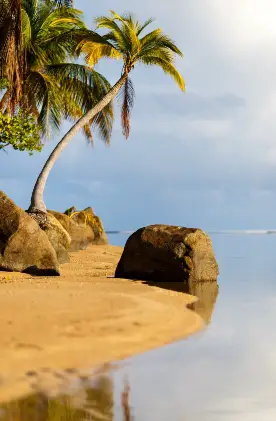Sao Filipe is the crown jewel of Cape Verde’s volcanic islands. The town is located on Fogo Island, and its landscape is shaped by the impressive Pico do Fogo volcano, the highest peak in Cape Verde. For both geologists and adventurers, Sao Filipe offers an opportunity to witness nature at its most breathtaking.
Sao Filipe – An Untapped Tourist Destination
Sao Filipe is truly a one-of-a-kind tourist destination, and it’s still largely untapped. If you were to look at Cape Verde on a map, you’d see that it’s a small island sitting in the Atlantic Ocean, about 450 miles away from Dakar, the capital of Senegal. Despite this, the official language is Portuguese. This is because Cape Verde’s story begins with its settlement by Portuguese explorers in the 15th century.

If we look at Sao Filipe specifically, over time, it became home to a wide range of different cultures due to its strategic position in transatlantic trade routes. Both African and European influences infused here, and this created a unique Creole culture that is evident in all aspects of Sao Filipean life today.
Beyond culture and history, geography is key to understanding Sao Filipe’s uniqueness. Due to its fertile volcanic soil, there is an enormous amount of biodiversity here. This includes endemic plant species like the exotic dragon tree, in addition to rare bird species like the Iago sparrow and Cape Verde shearwater.
This diversity extends to local agriculture, as well. The vineyards located within the crater of Pico do Fogo are known for producing distinctive-tasting wines that are catching on among connoisseurs. Even the coffee beans that come from here are known for their unique and incredible flavors, and this is largely thanks to how Pico do Fogo shaped the island.
Its geography has been a factor in tourism, too. Its isolated location has kept it off most people’s radars and allowed Sao Filipe to retain much of its pristine natural beauty, but this has started to change. More and more people are deciding it’s time to fly to Sao Filipe, thanks to the increasing availability of cheap flights, including even direct flights from US cities like Boston. Despite this surge in tourist numbers, it’s not quite world-famous yet. For travelers who are quick, there is still the chance to feel like they’re among the first tourists to discover Sao Filipe.
The Pico do Fogo Volcano – A Geographical Marvel
One of the main attractions of Sao Filipe is, of course, exploring the region around the Pico do Fogo Volcano. The volcano itself is still active, with its last eruption being back in 2014, but don’t worry. It’s very closely monitored for activity. Over millions of years, its eruptions have built many layers of lava and ash, sculpting the surrounding areas into the shape that we see today.
Travelers will be pleased to find a range of diverse hiking trails on offer. You’ll find some green vegetation sprouting up at lower altitudes while the terrain becomes starkly volcanic as you climb up higher. The most challenging trek leads all the way to the summit itself, where hikers are rewarded with incredible views that very few people get to experience. That said, this hike requires good physical condition and some preparation.
For those seeking variety, the Chã das Caldeiras region features less strenuous trails through the caldera. Here, hikers can traverse paths that cut across the lava fields, providing a close up look at the volcanic terrain. These trails also pass through small local villages, where communities have adapted to life in the shadow of the volcano. You can kick this experience up a notch by hiring a local guide who will take you on a deep dive into both the geology and the history of the area.

The Lava Fields and Other Biodiversity
The closer you get to the heart of Pico do Fogo, the more volcanic things start to feel. The signs of life in the form of green vegetation start to disappear and are instead replaced by expansive stretches of lava fields. These are effectively leftovers from previous eruptions, and they’re one of the most unique experiences a tourist can have.
As the magma cools over periods of centuries, the lava develops into rough textures and different shapes and patterns. Due to their different shapes and sizes, they capture shadows differently as the sun moves across the sky, and this provides endless unique photo opportunities. This is one of the reasons the destination is becoming increasingly popular among photographers.
Beyond the lava fields, the diverse ecosystem of Sao Filipe shows itself in many ways. As you venture out further, the landscape transforms once more, this time offering views of the volcanic terrain meeting with the Atlantic Ocean. This means that the beaches of Sao Filipe feature black volcanic sand, providing an extremely unique seaside experience.
This interplay of land and sea has created rich marine habitats, too. Snorkelers and divers can explore underwater volcanic formations and encounter a diverse range of marine animal life. Dolphins, whales, sea turtles, sharks, and many types of tropical fish are all found here. These contrasting environments highlight not just how visually appealing and attractive the region is to tourists, but also its ecological significance.
Although its popularity is rising, Sao Filipe is still relatively untapped. It’s a destination that promises adventure and discovery, so it’d be wise to check it out before everyone else catches on. It’s highly unlikely you’ll be able to get a similar travel experience anywhere else.























